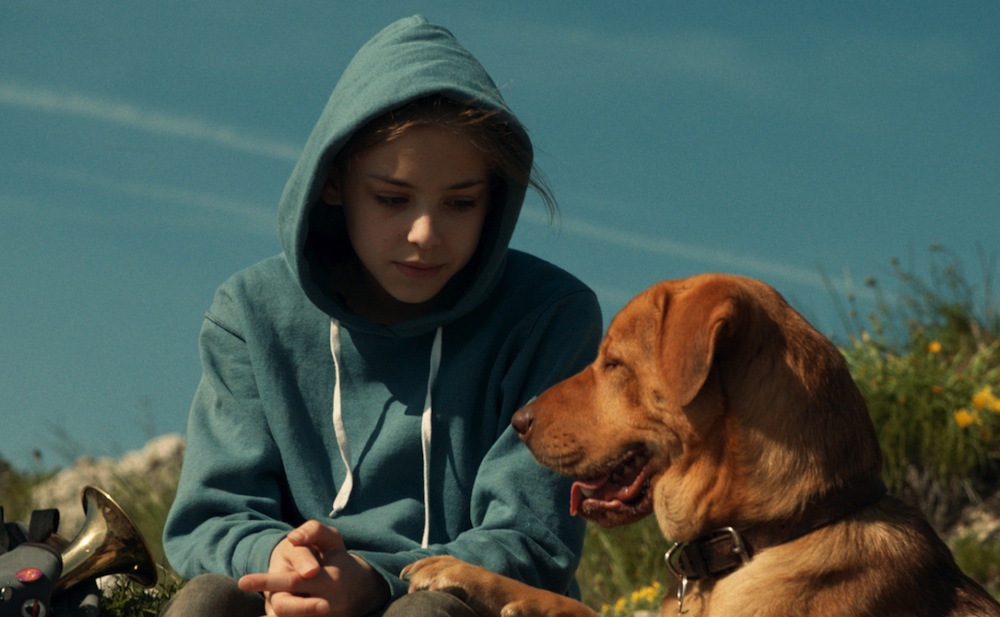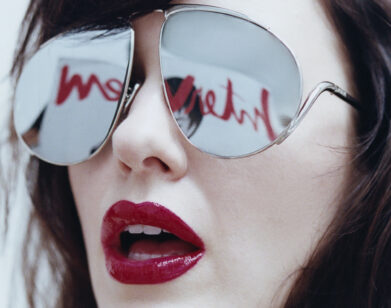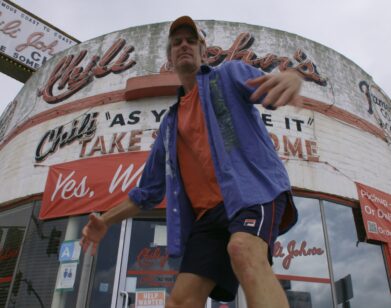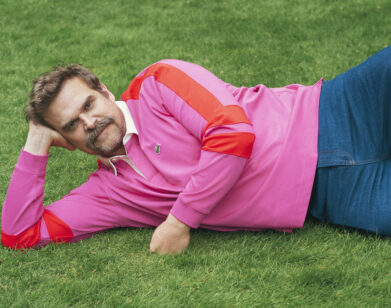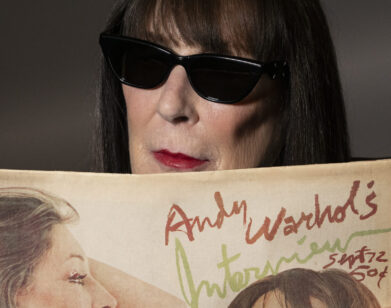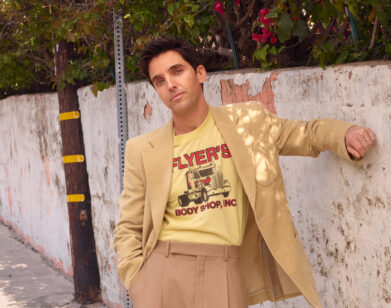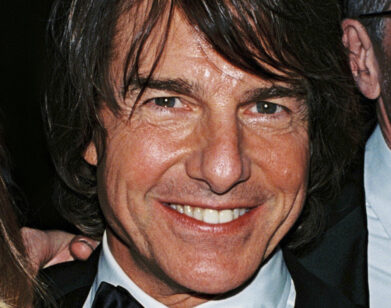Kornél Mundruczóâ??s Dog Days
The opening scene of Kornél Mundruczó’s White God unfolds like a fever dream. Speeding through the deserted streets of Budapest, past abandoned cars and the city’s stately Art Nouveau buildings, a teenage girl on a bicycle is followed by a feral pack of hundreds of barking, stampeding dogs. Inspired by failed legislation in Hungary, the crux of Mundruczó’s story—which won the Un Certain Regard prize at Cannes last year—is a minor distortion of the real, a world slightly more dystopic than our own, where mixed-breed dogs are subjected to registration, taxation, and potential imprisonment. The girl, Lili (ZÅ?ofia Psotta, in her debut), has a mutt of her own as her constant companion and confidant, a handsome blonde Labrador-mix named Hagen, played by brothers Luke and Bodie.
The pair separate when Lili’s father abandons Hagen on the side of the highway, and while Lili works to track him down, Hagen begins his own journey of hardship at the hands of humans, living on the streets, forced into dog fights, and teaming up with a vagrant Jack Russell to stay out of sight of the authorities. After landing at the pound, Hagen spearheads a Planet of the Apes-style canine revolution, where the mixed breeds break out, take over, and rise up viciously over their human overlords. But aside from the feat of corralling over 250 dogs without the use of CGI or special effects, Mundruczó constructs a deft and visceral allegory of the state of modern-day Europe’s tenuous relationship with race, class, and the disenfranchised. Mundruczó appropriated the title, White God, from a work of South African novelist and anti-apartheid activist J. M. Coetzee.
Interview spoke with the Hungarian director when he was in New York last week for MoMA’s New Directors/New Films program about the film, which begins with a title card quoting Rainer Maria Rilke: “Everything terrible is something that needs our love.”
COLLEEN KELSEY: Part of the driving force behind the film was J.M. Coetzee and his work.
KORNÉL MUNDRUCZÓ: Coetzee is really a writer who has changed my thinking about humanity in the last five, 10 years. His literature was really important for me. I worked on a theater adaptation of Disgrace [2008]. In Disgrace there is a line that happens in a dog pound. It just shocked me. I was really touched. I felt such shame that I am a part of the system. Why are the dogs behind the fences awaiting their own deaths? That was the point where I decided, let’s do a movie about it, let’s show the Hungarian situation. Of course Coetzee’s literature is deeply in [the film], but Coetzee’s literature is deeply in everything.
KELSEY: At the core of this film is a moral question about the socioeconomic state in Hungary and to a larger extent in Europe, but it really is a universal one. What was your starting point?
MUNDRUCZÓ: I don’t know how it was in the U.S., but in Eastern Europe, the economic crisis was really hard. The society is loaded by a lot of fear. Existential problems happen. The economic crisis is over, but a huge moral crisis follows. The fear is not gone. The people are not as open as before, so of course there is a lot of populism, and the nationalists are growing. That’s why Europe is more and more extreme, and more against the refugees and the exodus from the Middle East and Africa. Everyone wants to come to live in a better world, but the societies are much more closed. In the U.S. you have [immigration] culture, but that is not the European culture—the European culture is to colonize everything. To create a movie about dogs, people understand they are the ultimate minority, the newcomer, or part of the family. I really think it’s time to deal with these questions and create moral dramas. Some people think this is a very difficult movie, some people think this is a very simplified movie. It’s both. There are very simple questions inside, which can be very deep, but it’s simple—where is your morality?
KELSEY: In the U.S., especially, dogs are beings that are so beloved—watching the film, it’s very easy to put one’s allegiance and sympathies with them, rather than identifying with the humans.
MUNDRUCZÓ: It’s like a fairy tale. The characters are not very layered. The characters are not very dimensional. But it’s in perspective—you really follow the dogs, or you understand you are part of the majority who is creating a story like this. I think this is something that is really divided culture by culture. Of course in Mexico or Greece, it’s totally different than in Germany, France, or the U.K.
KELSEY: When I first started watching the film, I thought it was really going to be Lili’s story, and Lili’s coming of age, but however many minutes in, Hagen takes his place as the main character.
MUNDRUCZÓ: Exactly. I tried to make a breaking point. You start to watch a movie where you understand they are the family: Lili and Hagen. Lili has nobody, just Hagen, and Hagen has nobody, just Lili. Then they are separated. Then it stays with Hagen quite long, focusing on him and on that part of the city where [the dogs] are living. I really [wanted] to switch and surprise the audience. “Oh, we’re staying with the dogs? We just follow them?” It’s like a silent movie. Dogs communicate in a different way.
KELSEY: Something that I was quite amazed by was how emotive and human the dogs’ acting was. There is this one moment with Hagen and the Jack Russell, right before they are caught by the dog pound people. The Jack Russell sniffs and cleans Hagen’s ear. It’s this really intimate moment, but you couldn’t have had much control over the animal behavior.
MUNDRUCZÓ: We gave a lot of freedom for that. Of course, it was a great lesson for me as a filmmaker. From a certain point you cannot control [everything]. I can’t say it’s not a fiction movie, but has a lot of nature movie elements, where we are there, just waiting and shooting to see what happens. For example, where he started to lick the ear, that was the moment we were waiting 40 minutes or an hour for. It was like therapy for me. I don’t know if I became a better human, but I’m sure I became somebody else after spending a year working closely with animals.
KELSEY: Was it a more instinctual way to work? With actor, you can give them instruction, but you really have to take the lead of the animal in this situation.
MUNDRUCZÓ: They cannot lie at all. They cannot lie, like children or like innocents. You cannot manipulate them. If you do, then the result is just bad. I lived through the Soviet time when I was a child, and there were some animal movies where you really feel they are dead—they just do the orders. This was totally different, positive reinforcement with the animals, playing, and they give their emotions. You can follow their emotions, so it’s really like acting. You need patience and curiosity to wait for that moment when they give it, it really burns onscreen, you really feel the strength. That’s why we decided not to use CGI, because then it’s human imaginations and illustrations about animal emotions onscreen. This movie’s really not about that. I really wanted to give the same experience that I had at the dog pound.
KELSEY: How did connect with Teresa Ann Miller, the animal trainer?
MUNDRUCZÓ: She worked on a long series Kommissar Rex with a German shepherd. A German production manager gave me her number. At that time I got a lot of “No”s from European and Hungarian trainers who said, “KorneÌl, with that concept and no CGI, and no purebred trained dogs, just newcomer mixed breeds, you cannot do this movie.” Teresa was the last one I reached and she said, “Maybe, maybe I can imagine it.” She started to do the cast, and when we found the boys, she was really trustful [of the vision.] But she’s an amazing person. What she does with the leads, the two boys, to create a hero dog, it was much more than I expected. To bring together two hundred something depressed dogs living in a dog pound to be a happy band, it’s a huge job. The first time I saw the rehearsal, fifty dogs lying down together, silent, that’s somehow a miracle. It’s so beautiful.
KELSEY: Did you have an ideal vision in mind for Hagen before you found Lukas and Bodie?
MUNDRUCZÓ: Yeah, and it’s really close to it. I thought, I really would like to have this brownish yellow-type, and I really need a family dog face who can transform to be violent. That was really difficult because most of them are just a family type, and they cannot be rude, or just rude, who cannot be a family type. That mixture was really difficult to find, but they were really strong. They were really young when we found them, they were less than a year old. When we shot, they were just over a year. Now, they’re much more masculine. Then they were just teenagers.
KELSEY: There is a split in tone in the movie—much more classical in the first half, and then in the second, the genre and mythical elements come in. Were there any specific references you took in creating this hybrid?
MUNDRUCZÓ: I feel the last eight, five years, the reality surrounding me in Budapest has completely changed. This timeless melancholy, which is like the Eastern European topic, is just gone. It’s really a dogmatic topic, like you must use your camera as an Eastern European. But that world is gone. We’re not living anymore behind the Iron Curtain anymore. It’s a fast, hard, wide, extreme society. If you are walking a block to another, everything can happen. So I really wanted to try to find a cinematic language, which reflects my reality. The reality is just the genres are mixing. My previous movies are slower than this one. But the world was slower.
Audiences have reacted really well in mixing genre, especially in television. Television series do much more radical stuff than what’s going on in Hollywood, and now Hollywood is following television, which is much more brave and much more reflecting of reality. When I made this, I thought, “Maybe it’s very radical, very like a cinephile movie with these elements,” but everybody caught it easily. It gives me lots of hope to continue in this way.
WHITE GOD IS OUT IN LIMITED RELEASE TODAY.

